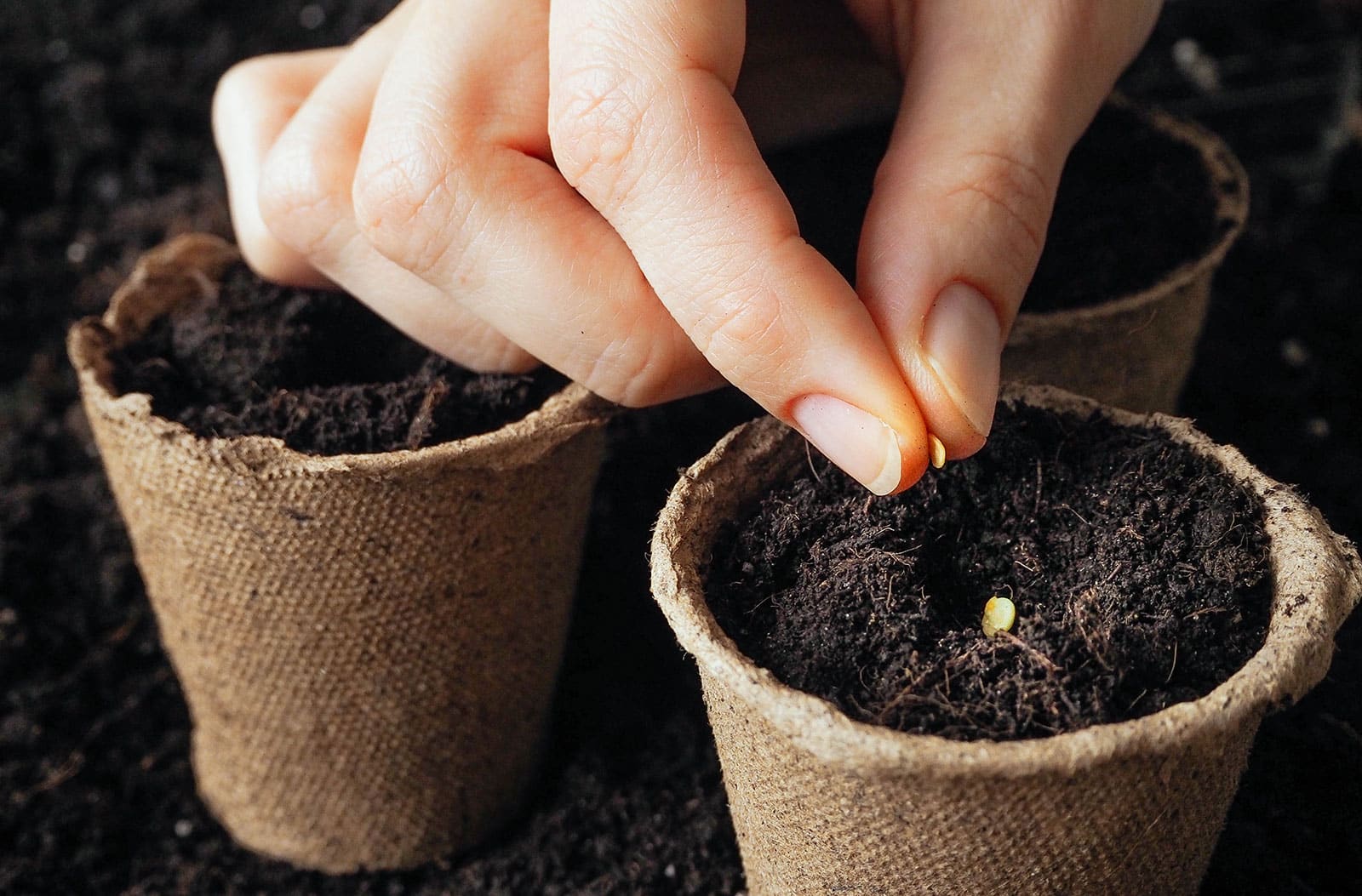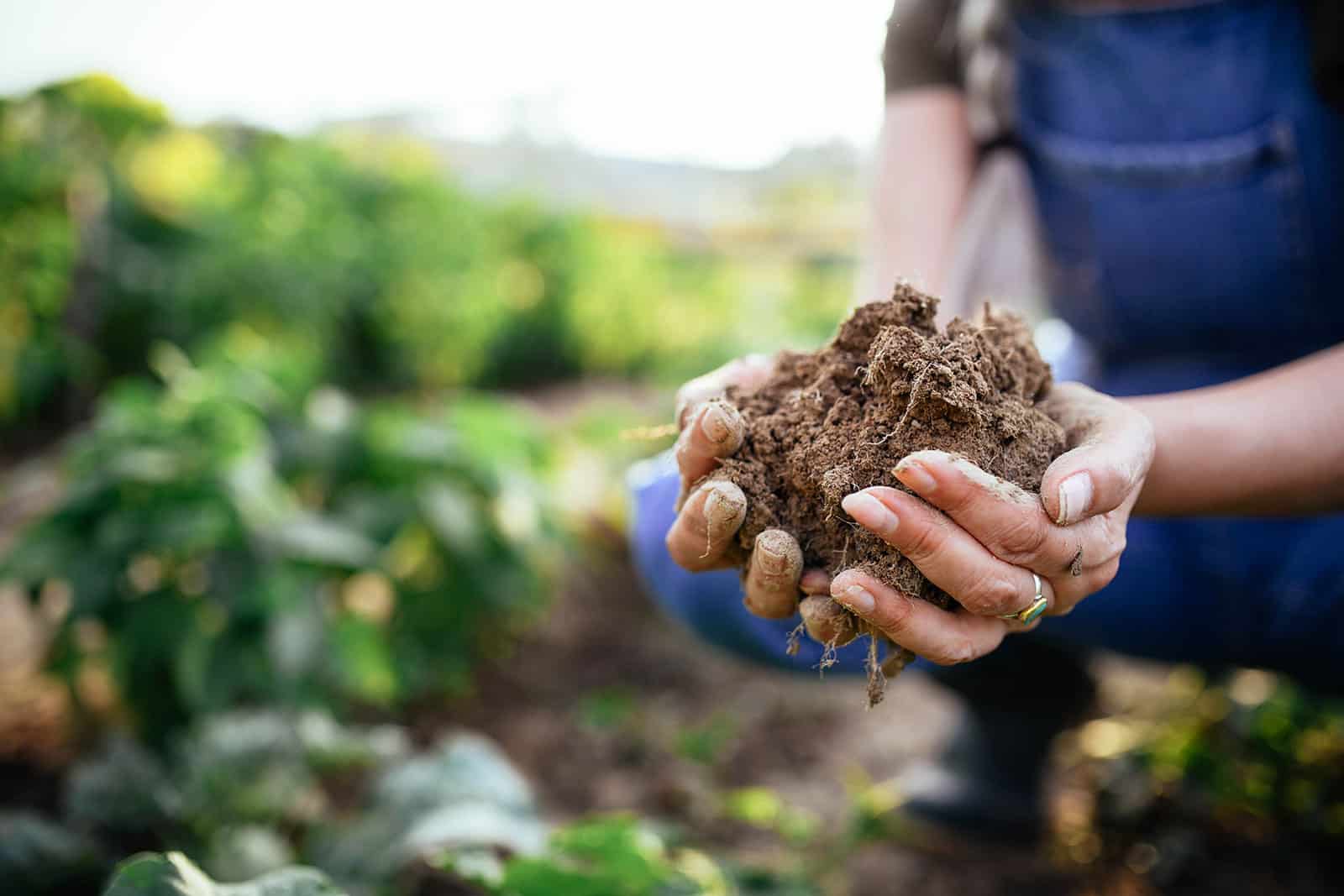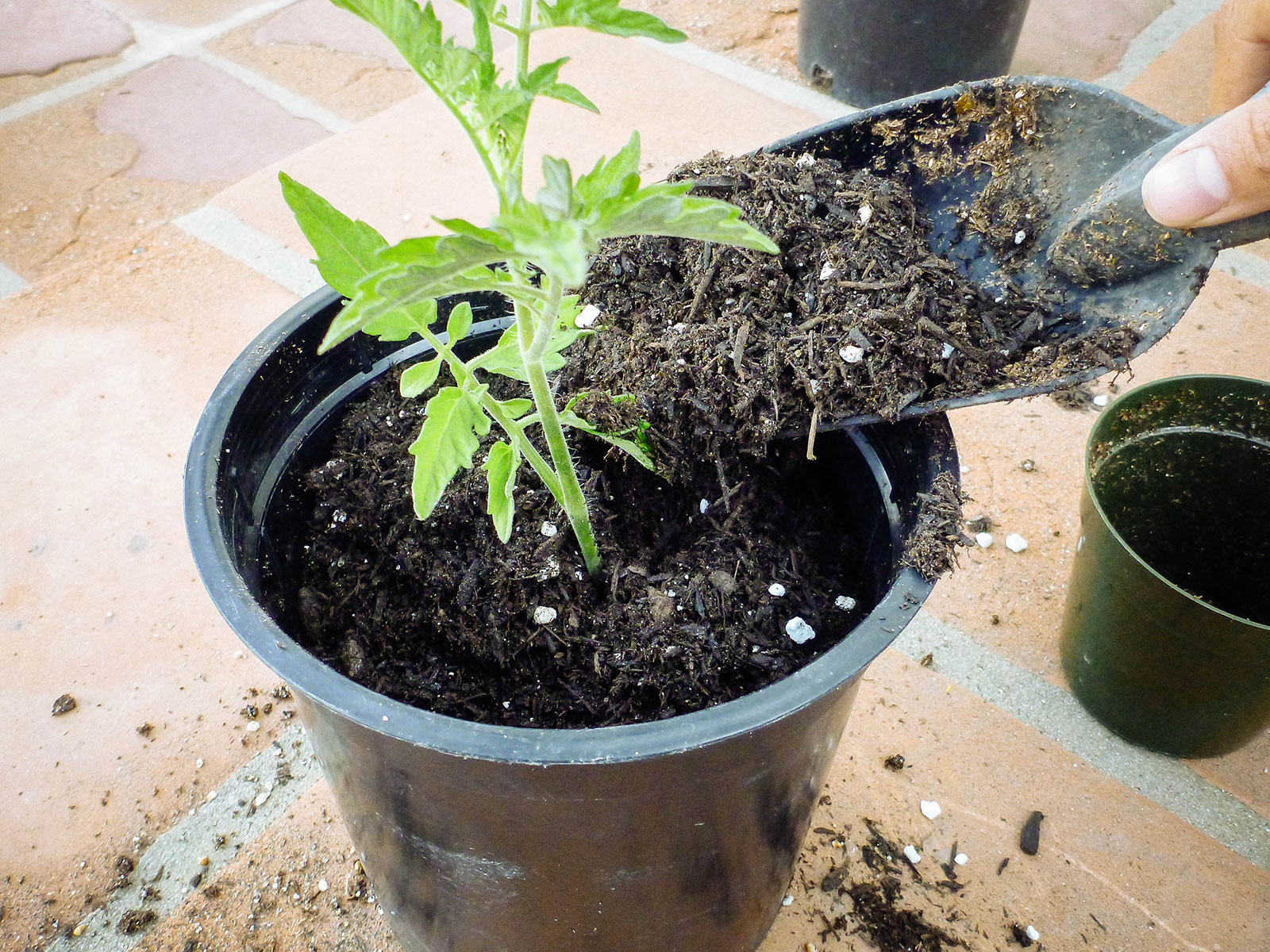In any given season, I start hundreds of plants from seeds, both indoors and outdoors. Starting seeds has many advantages over purchasing starts (including access to a better variety of plants and being way more economical), but it also comes with challenges.
Even the most experienced gardener makes mistakes when it comes to seed starting, and admittedly, I’ve been guilty of some of the ones I’m sharing below.
So learn from the errors of my ways and boost your chances of success this season: I’m laying out the 12 most common seed-starting mistakes I see and hear about, and what you can do to prevent or fix them.
1. Using old seeds.

Yes, yes, we’ve all heard about the long-forgotten packet of tomato seeds that someone found in their basement 20 years later, and the seeds still sprouted miraculously.
But all seeds have a shelf life, and that shelf life greatly diminishes in the average home because we usually store seeds in less-than-optimal conditions. (Here are some simple seed storage ideas to help keep your seeds more viable.)
Not to mention, many seeds don’t last as long as we think. Onion seeds, for example, are only good for a year at most. Maybe you were able to get that two-year-old onion seed to germinate, but chances are, it won’t reach its fullest potential as a plant.
Why? Because even though a seed may germinate, that doesn’t translate into a will to thrive. Seed vigor determines how a seedling will grow, and compromised vigor (due to age or other environmental factors) will affect how well the roots develop, how fast the plant grows, and how many flowers (and fruits) it produces.
Most seed packets don’t list an expiration date; they list a packing date, which you can use to estimate the shelf life of your seeds. If you’re unsure how long your seeds will last, use my chart to help you determine their viability.
2. Failing to account for “days to maturity.”

A good number of people probably don’t pay attention to the confusing “days to maturity” label on their seed packets. (You’ve also seen it as “days to harvest.”) But if you live in a region with a cooler or shorter growing season, this is one term you need to know.
Let’s say you live in zone 5 and decide to start winter squash from seed that takes 110 days to maturity. Well, you’re not going to get very far with your crop unless you start those seeds indoors early and can offer frost protection in spring and fall.
However, there are many winter squash varieties that take only 80 or 90 days to mature, and you’re better off starting these kinds of seeds to maximize your harvest.
Days to maturity can be a tricky thing to figure out as the number of days sometimes starts from the time you sow the seed, and sometimes starts from the time you transplant the seedling. (Weird, I know.)
To learn how to decipher this cryptic countdown, read more about how to determine a plant’s actual days to maturity. (You’ll want to use this information in conjunction with your average frost dates—which I cover in the next point—to get a more accurate picture of your growing season.)
3. Starting seeds at the wrong time.

It’s common to think that all seeds should be started in spring—but exactly when in spring (or late winter, for that matter) is an important factor too.
If you sow your seeds outside too early, they could rot in the ground while they wait for soil temperatures to warm up. Meanwhile, indoor-started seedlings could become large and overgrown before it’s time to transplant them in the garden.
If you start your seeds too late, you risk the weather being too warm for certain seeds (like lettuce) to germinate. Or, indoor seedlings could be too small to transplant in their ideal timeframe, leading to reduced yields.
So, when should you start seeds? It all comes down to knowing the average last frost date for your specific area.
Once you know your last frost date, simply count backward the number of weeks required for each type of plant to be direct sown or transplanted. (This info can be found on the seed packet; in general, most vegetable seeds need about six to eight weeks to get to transplant size.)
To calculate your frost dates, use my custom planting calendar, print out a copy, and keep it with your seed packets.
4. Forgetting to stratify seeds.

Stratification (also known as cold stratification) doesn’t apply to all seeds, but it’s the number-one reason some seeds take their sweet time germinating (or refuse to germinate at all).
Take milkweed, for example. Since it’s a flower, you may have tried to start milkweed seeds in spring with all your other flowers, only to find it didn’t sprout until the following year. What gives?
Milkweeds (and other flowers such as black-eyed Susans, pansies, and coneflowers) need a long period of cold and moisture to break dormancy before they germinate. This behavior is typical of certain native perennials, which—in the wild—follow a natural pattern of dropping their seeds in fall and sprouting in spring.
You can mimic this freeze/thaw cycle by refrigerating your seeds in a moist medium for several weeks before you sow them. Here’s a guide on how to stratify seeds properly, and which seeds require it.
5. Starting seeds in native soil.

Let me be clear that all seeds can be started in native soil… as long as they are outside.
But if you’re starting seeds inside, most native soil (that is, the regular soil in your garden) is simply too dense for the tiny, closed environment of a seed-starting tray or seedling pot. Without the large soil volume of a garden bed, native soil won’t drain well, leading to problems like overwatering or damping off.
That’s why the best soil medium for indoor seed-starting is actually a soilless medium that has a good balance of moisture retention and drainage. You can use vermiculite to germinate seeds, buy a high-quality seed-starting mix, or—if you’re starting lots of seeds—save money by making your own organic seed-starting mix at home.
6. Sterilizing your seed-starting soil and seedling pots.

When I first started gardening, I read a few articles online that advised people to sterilize their seed-starting soil on a sheet pan, in the oven, of all things! The reasoning was that without any fungi and bacteria contaminating your seeds, you’d stand a better chance of growing healthy seedlings.
But even though some store-bought seed-starting mixes claim to be sterile, they are no longer sterile once you open the bag and scoop them into your pots.
And sterile soil isn’t necessarily good for your seedlings, anyway. These young plants need to acclimate to life outside—in vibrant soil teeming with microbes (both good and bad)—in order to do their best.
The same goes for bleaching your pots in order to sterilize them. (I talk more about why I never sterilize my plant pots in this other post, and why you shouldn’t either.)
All of this is simply overkill and, quite honestly, a waste of time. If your seedlings are suffering from fungal or bacterial diseases, the likely culprit is overwatering or too much humidity.
7. Planting too deep (or not deep enough).

Small seeds such as basil, onions, and carrots should only be covered very lightly with soil or vermiculite. That’s because these little specks of seeds don’t have the energy within them to push through a lot of soil when they germinate.
A general rule of thumb is to plant seeds at a depth that’s equal to two or three times their width (or diameter).
So if a seed is 1/2-inch wide, plant it 1 inch deep. If a seed is 1/8 inch thick, plant it 1/4 inch deep. Larger seeds (like beans and peas) should be planted deeper than smaller seeds (like cucumbers and tomatoes).
On the other hand, some seeds (like lettuces and celery) actually need light to germinate. If you cover them with a layer of soil, they likely won’t emerge.
The tricky thing is when you don’t cover certain seeds enough… then they might dry out on top before their seed coats can swell and rupture (a process we know as germination—here’s a visual guide of exactly what happens a seed germinates).
Personally, I feel it’s better to err on the side of planting too shallow than too deep if you’re starting seeds indoors, since you can keep a better eye on moisture levels.
8. Starting seeds on a window sill.

I confess that I sometimes still do this, even though it’s not the most ideal scenario. Seeds started in front of a window (especially a non-south facing window) often don’t get enough sun to grow big and strong.
In general, seedlings need at least 12 hours of light per day (though they do even better with 14 to 16 hours of light). These numbers are hard to achieve in a window, and with the arc of winter’s sun, seedlings usually end up weak and spindly as they stretch upward or sideways for more light. (Learn how to fix leggy seedlings if this is happening to you.)
The only real solution is to start seeds under artificial lights. But before you think a grow light station is too costly to set up, know that you can use ordinary (and inexpensive) LED or fluorescent shop lights for your seedlings. Simply hang the shop lights above the seedlings and set them on a timer to turn on for 14 hours a day.
The exact height over your seedlings will depend on the output of your lights—be sure to follow the manufacturer’s recommendations. LED lights typically emit more light and should be hung at least a foot or more above your plants, while fluorescent lights can be hung just a couple inches away.
9. Overwatering (or underwatering) seeds and seedlings.

Overwatering is probably the number-one cause of seed and seedling issues. While seeds need consistent moisture to germinate, too much moisture can cause them to rot before they have a chance to sprout. Excess moisture is also a reason some seedlings keel over suddenly (in a non-treatable condition known as damping off).
On the flip side, underwatering your seeds may cause a crust to form on the soil surface, making it more difficult for germination to occur. If the seedlings do manage to push through the crust, lack of moisture near the surface (where the roots are) could lead to stunted growth or premature death.
If you tend to have trouble with watering, be sure to use a good-quality seed-starting mix or a light, fluffy potting soil that retains and drains water properly.
10. Not hardening off seedlings.

Seedlings started indoors need to acclimate to the elements before being transplanted outdoors.
Think about it: Your seedlings have spent the first few weeks of life in a warm, cozy environment, sheltered from wind and rain, and you’re about to kick them out into the real world.
If they aren’t prepared for the intense sunlight, cold nights, or strong breezes in your garden, they’re not likely to survive or thrive. Best case scenario, your seedlings suffer a bit of thermal shock and are slow to get going. But in many cases, growth is stunted or they become susceptible to pests and diseases.
So before you set your seedlings outside, be sure to toughen them up first (as temperatures allow). Follow my guide on how to harden off your seedlings—in seven days or less!
11. Not thinning seedlings.

Seeds (particularly tiny seeds) tend to get sown closely together to account for a few seeds failing to germinate. But if all of them germinate, you end up with a cluster of seedlings all vying for light and moisture.
This leads to leggy seedlings or weaker seedlings that struggle to develop properly. Left to continue growing, they’ll eventually compete for nutrients and become vulnerable to diseases that spread more easily due to proximity.
While it’s okay and generally advisable to start several seeds in the same cell plug or seedling pot, you only want to keep the strongest seedling once the first true leaves have developed.
For seeds started outside, you’ll need to thin seedlings according to their recommended plant spacing. (Don’t toss those seedlings, by the way—harvest them as microgreens to use in a sandwich or salad!)
12. Neglecting to pot up seedlings.

Once they’ve grown their first set of true leaves, seedlings shouldn’t be left in the same tiny cells or pots they’re started in. They’ll become root-bound or risk their roots being damaged if they’re moved when they’re overgrown.
So, you need to pot up your seedlings into larger containers if you aren’t transplanting them right away. If you want to keep all of your seedlings that have germinated, this allows you to do that without sacrificing any that still seem healthy.
To save multiple seedlings that sprouted in the same cell, scoop out the entire cell using a spoon. Gently separate the seedlings, then repot each seedling into its own 3-inch pot.
Tomato seedlings benefit from being repotted by burying the stems up to the lowest set of leaves; doing so encourages more roots to grow along the stem, forming a more robust root system.
You can even repot tomato seedlings a second time (into gallon-sized containers) to take advantage of these adventitious roots. It’s better to have a short and stout tomato plant with a deeper root mass than a tall, slender one with roots concentrated near the surface.
View the Web Story on seed starting mistakes.
















So helpful and timely! Starting seeds in Zone 5 is definitely a challenge. Thank you.
Fellow Zone 5-er in firm agreement!
Very useful information. Thank you very much for sharing